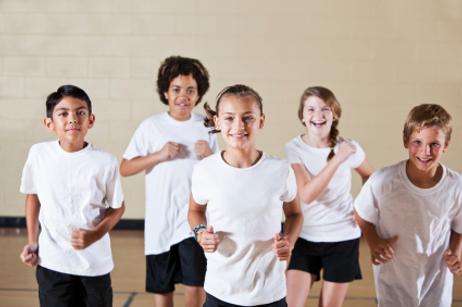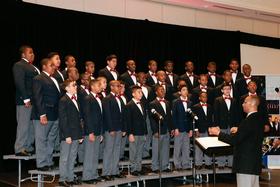Gym class is invariably portrayed on the silver screen as a time of awkwardness and embarrassment when kids have to climb ropes and do a certain number of push-ups in a minute’s time. However, gym class is much different now, and it is not surprising that today’s students and parents are questioning why it’s even a mandatory part of the day. After all, according to an MSNBC investigation, researchers have found that the average high school gym class only keeps students physically active for an average of 16 minutes! In a class period that is about 45 minutes long, that isn’t a lot of active time. In today’s educational climate in which standardized test performance in core subjects carries a significant amount of weight with regard to teacher and school evaluations, “wasting” all that time doing nothing in PE is something districts cannot afford. As such, PE classes have been cut so students can spend more time in core classes.
Supporters of mandatory gym programs contend that physical education classes have a wide range of benefits. According to the National Association for Sport and Physical Education, physical education classes help children develop fine and gross motor skills, learn cooperation and teamwork, reduce stress, and improve self-confidence and self-esteem. Furthermore, supporters argue that public schools have a responsibility to encourage children to enjoy a healthy and active lifestyle – especially as a rising number of young Americans are obese. Activities that promote muscular strength, cardiovascular endurance, and flexibility, they argue, can help reverse the trend of American
children gaining weight.
Subsequently, some school leaders are left without a clear answer in the debate. Should fitness classes be required to fulfill a school’s curriculum requirements?
This video looks into the question of whether or not physical education should remain in public schools.
Are Physical Education Programs Really Fit?
Further expounding on the issue, MSNBC also analyzes a major study of physical education programs conducted by Cornell University. The study, based on information from 37,000 high school students’ responses to surveys from the Centers for Disease Control and Prevention, reveals that most students do not believe gym class is effective. This has led nearly all states to create and pass new bills to reform public schools’ fitness education programs.

Unfortunately, while many states have increased the time students spend in gym class, Cornell's study found that adding 200 more minutes of time to gym class each week did not produce substantial changes. Even by adding 200 more weekly minutes, the studies showed that boys generally engaged in only 7.5 minutes of more activity per day, while girls only participated in activity 8 additional minutes each week.
Attempting to explain these disappointing results, Cornell's lead professor of policy analysis and management asserts, “The rest of the extra gym time is likely spent being sedentary — most likely standing around idly while playing sports like softball or volleyball that don’t require constant movement.” Cornell’s results hit a familiar nerve, as a study of fitness classes in Texas elementary schools also found that the majority of students spent the class time inactive; specifically, the data suggested that students were only engaging in exercise or movement for approximately 3 minutes during the entire class period.
As reported in USA Today, what would benefit children more is periods of rigorous physical activity that make them break a sweat. High-energy games like tag and dodgeball are great examples of activities that have little downtime. At a minimum, elementary-aged children should get 30 minutes of moderate exercise a day. Middle school and high school students should get 45 minutes of exercise a day. And about half of that time should be spent in activities like those mentioned above that get the heart racing.
Should Schools Discontinue Gym Classes?
Despite the results, the lead professor of the Cornell study does not necessarily believe that gym classes should be banned in public schools, arguing, “We’re not saying schools should get rid of (physical education),” but “there has to be a meaningful change in the curriculum.”
While many of the nation's gym classes may not be performing at peak levels, supporters of fitness education aim to spotlight the potential of reform, as well as the accomplishments many public schools have achieved.
In examining the changing policies of fitness education, it is important to understand how gym classes in public schools could be modernized. While running laps and doing jumping jacks used to be a staple of many physical education classes, many schools have diversified their options to reflect a more modern take on gym class. Schools offer instruction in traditional team sports and games like flag football and red rover, but also emphasize healthy eating habits, and the benefits of lifting weights and offer unique experiences from bowling to fly-fishing to kayaking. By offering more intriguing physical activities for students, many public schools are reporting positive feedback from both their students and community members.
Many physical education leaders are arguing for a complete paradigm shift in the area of fitness and wellness instruction. Elizabeth Spletzer, a highly experienced fitness instructor currently coordinating the University of Minnesota's Physical Education Teacher Licensor program, strives to teach future fitness teachers the diverse learning benefits that children gain from physical activity. Instead of seeing gym class as only a physical activity, reformists like Spletzer want others to understand the psychosocial benefits of exercise, including improved self-esteem, better behavior and decreased instances of depression and stress. There are academic benefits as well. According to a report by the New York Times, students who are physically active have better attention and focus, improved problem-solving abilities, better working memory, and a general improvement in both reading and math scores. In fact, the academic benefits students gain from physical activity during the school day appear to outweigh the benefits of increasing class time in subjects such as reading and math.
While schools debate the future of physical education, one fact remains certain: gym class will never look the same again!
Questions? Contact us on Facebook. @publicschoolreview









































































